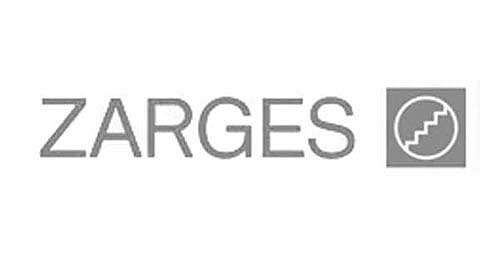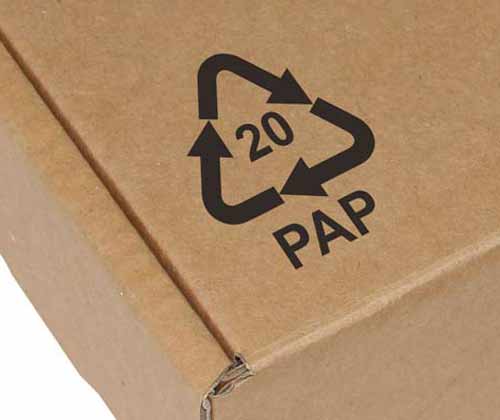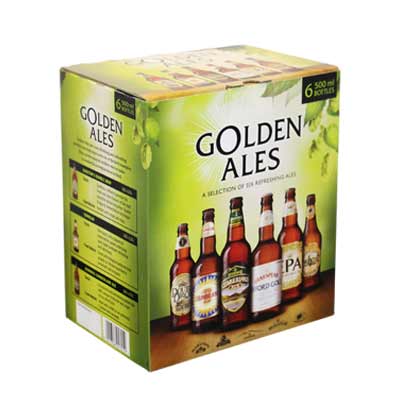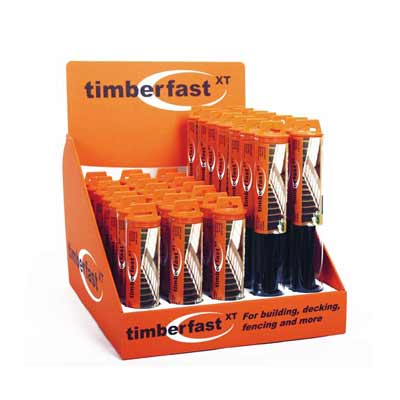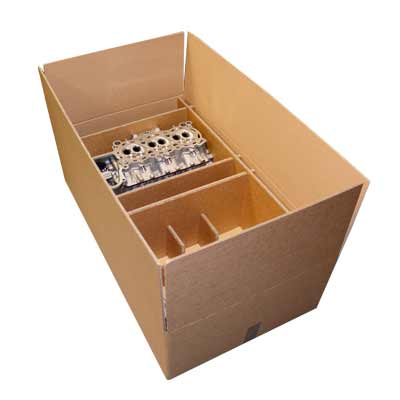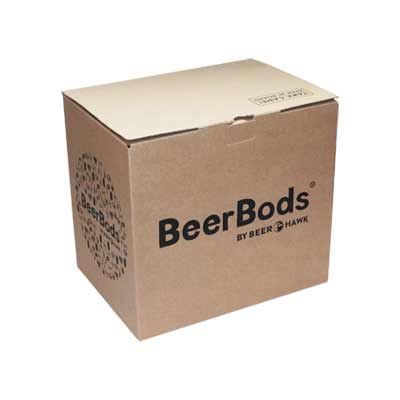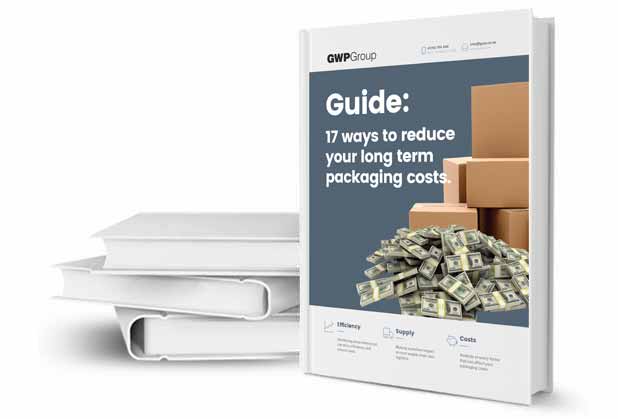Surprising facts about Easter packaging
Statistics on consumption, materials, recycling, and the chocolate itself
Whether you purchase packaging, care about recycling, or just love chocolate, this collection of Easter packaging facts and figures is just for you.
Startling Easter packaging facts include the estimated 4,300 tonnes of card used, the 80 million Easter eggs purchased each year, and the 160 tonnes of foil packaging used. Packaging typically accounts for a quarter of the total product weight, and 65% of Brits believe that Easter packaging is excessive.
However, could the ongoing squeeze on consumer finances impact sales in 2025? Will more environmentally conscious consumers demand changes to Easter egg packaging? Could supermarket competition actually lead to increased packaging waste? Or will the Plastic Packaging Tax and Extended Producer Responsibility (EPR) requirements mean retailers and brands eliminate plastics from their packaging?
Contents
Easter packaging facts
Facts and figures regarding Easter packaging in the UK
In this blog, you’ll find a collection of striking packaging facts related to Easter eggs and the packaging they generate. We will also examine consumer spending in the UK during the Easter period and how this translates into the packaging used.
Consumer activity and spending at Easter
Estimates suggest that between 80 and 90 million chocolate eggs are consumed annually in Britain, with each child in the UK receiving, on average, eight easter eggs each year, making up 10% of the UK’s annual spending on chocolate.
Predictions indicate that consumers are likely to spend around £1.6 billion on Easter in 2025, with an average spend of £37 per person, an increase of £10.15 compared to the spend in 2022! Although reports suggest that Easter sales fell by 12% in 2024, this is attributed to rising inflation and more health-conscious attitudes.

75% of people in the UK associate Easter with chocolate eggs, and men reportedly spend more on Easter-related items than women – £29.83 vs £25.77, respectively. However, more women purchase eggs and other Easter-themed items, with 65% of women in the UK making seasonal purchases, compared to just 59% of men.
What about the packaging?
Predictably, most UK consumers believe that Easter eggs have excessive packaging. Almost two-thirds (65%) of British adults said that they thought Easter eggs are over-packaged and believe brands should take steps to reduce packaging. This sentiment is even stronger in Europe, with 62% of European consumers indicating that they would be willing to pay higher prices for food products with less packaging.
In many of the UK’s best-selling chocolate eggs, the plastic and cardboard packaging accounts for over a quarter of the total product weight, and on average, the chocolate itself only takes up 38% of an Easter egg box (by volume).
The charity Oxfam also reports that, on average, a 200g chocolate egg uses 54g of cardboard and 2g of foil in its packaging, and assuming all chocolate eggs consumed in the UK were supplied in carton board or corrugated packaging, they use a mind-blowing 9,391.8 square miles of material.

A Which? survey conducted in 2018 suggested that Cadbury’s Twirl Large Easter Egg had the least packaging of the major brands (accounting for 18.8% of the total weight).
In contrast, Thornton’s Classic Large Egg was the most over-packaged. The cardboard box and plastic accounted for more than a third (36.4%) of the product’s weight.
In total, Easter egg packaging generates over 8,000 tonnes of waste annually.
Packaging improvements
Steps businesses are taking to reduce packaging
But what are large brands and retailers doing to address these challenges and the negative perception that comes with them?
Despite the negative press many brands receive, here are some figures on how they are addressing the issue.
Well-known chocolate brands
Thornton’s reduced its Easter packaging by 22% between 2017 and 2018; this change is equivalent to eliminating 73 tonnes of packaging waste.
In 2012, Nestlé became the first major confectioner to introduce 100% recyclable packaging across its entire range. They also took the step of replacing all plastics with FSC-approved cardboard and compostable film. These changes resulted in a 30% reduction in packaging – equivalent to 48 tonnes.
Nestle also removed the plastic from 20 million Easter egg packs to aid in recycling, and finally, they redesigned their packaging to make it more compact. Doing so saved 48,000 road miles in transporting their Easter eggs in 2018.
Cadbury, one of the most popular chocolate brands in the UK, has also removed more than 6.4 million plastic windows from its eggs (equivalent to 5.4 tonnes). They have also committed to using 100% sustainably sourced cardboard.
The makers of favourites, including Dairy Milk, Bourneville, Crunchie, and more, have also reduced the amount of plastic casing in small and medium-sized Easter eggs. This change saves around 202 tonnes of plastic, equivalent to approximately 4.8 million PET bottles.
Large retailers
Among the large retailers, Waitrose has announced that it has stopped using plastic trays and removed plastic windows from nearly all of its Easter products, resulting in an overall reduction in packaging weight of almost 20%. This change saves one ton of plastic from going to landfill.
Asda also indicated that it reduced plastic use by 98% in its Extra Special Easter Egg range (equivalent to 16 tonnes) and modified the shape of its eggs to better fit the new cardboard packaging.

German discounter Aldi has also committed to removing all plastic packaging from its Easter egg range by switching to pulp trays. Doing so eliminates 24 million pieces of non-recyclable plastic – equivalent to a staggering 900 tonnes.
Marks & Spencer, Mars and Sainsbury’s are among the other companies that have changed their Easter egg packaging.
Easter recycling guides and advice
How to ensure your Easter packaging is properly recycled
Despite retailers’ efforts and growing consumer demands for sustainability, it remains crucial to determine the scale of waste generated during Easter. Several facts and figures highlight the scale of packaging waste.
Packaging waste generated at Easter
Estimates indicate that the 80 million chocolate eggs sold at Easter in the UK generate around 9,600 tonnes of cardboard waste, 4,000 tonnes of plastic waste and 8,500 tonnes of food waste.
Despite the packs being mainly recyclable, Business Waste estimates that the UK generates around 8,000 tonnes of packaging waste each year.
Over 8,000 tonnes of Easter packaging waste takes 500 large lorries to transport to landfills or recycling centres. If this 8,000 tonnes of waste is recycled, it could produce the energy used to generate 4,700 homes or 8,000 fossil-fuel-powered cars.
In total, the UK produces approximately 12 million tonnes of packaging waste annually, with a significant portion being food and drink packaging.
Easter egg packaging, in reality, contributes a tiny percentage of the overall UK domestic (i.e., household) packaging at only around 6%.
Similarly to Christmas, between 10 million and 20 million greeting cards are sent and received around Easter. These cards add to the mountain of waste and recycling.

How to recycle your Easter egg packaging
Thankfully, almost all of the packaging, including the foil wrapped around the egg and the cardboard container in which the eggs are packaged, is now recyclable. The only packaging that is generally non-recyclable is the individual chocolate bar wrappers and plastic windows.
The best way to recycle Easter egg foil is to scrunch it into a fist-sized ball before placing it into your recycling bin. Doing this ensures small bits of foil do not get lost during the recycling process.
However, if the foil has chocolate on it, you should rinse it off first. If it is still too dirty, it is better to place it in the waste bin to avoid contaminating the load.
You can place carton board and corrugated boxes used for Easter packaging in your recycling bin. Collapsing them first can leave room for more recycling.
And finally, most plastic that remains in Easter egg packaging is PET 1. PET 1, or polyethylene terephthalate, can be recycled by 99% of local authorities. It is the same plastic used to manufacture drink bottles.
Chocolate and Easter consumption facts
Interesting and fun facts on UK chocolate consumption at Easter
Enough about the packaging, what about the important part – the chocolate?
There are several interesting facts regarding chocolate consumption in the UK throughout Easter and beyond.
Easter egg consumption in the UK
In 2025, consumers spent approximately £255 million on Easter eggs. Easter egg sales make up 10% of Britain’s annual spending on chocolate.
The 80 to 90 million chocolate eggs of Easter, if laid side by side, would stretch from the UK to Sri Lanka.

Initially launched in 1971, Cadbury’s Crème Egg is the most popular chocolate egg globally. The Cadbury’s factory at Bourneville, which produces Crème Eggs, can make 1.5 million Crème Eggs daily. 500 million are made each year, with around 305 million exported to overseas markets.
If you piled all the Crème Eggs manufactured each year on top of each other, they would be taller than Mount Everest.
Children's Easter eating habits
Children are estimated to eat an average of eight chocolate eggs during the Easter period each year.
A typical chocolate egg has around 1,000 calories. So, a child eating eight eggs consumes approximately 8,000 calories. Put another way, the number of calories is roughly equal to their total recommended daily calorie intake for an entire week.
Surveys show that parents spend roughly £25 per child at Easter, and 27% of parents admit to eating their children’s chocolate. This figure rises to 80% in the USA, although it may be that they are more honest!
And finally, 76% people stated that they eat a chocolate bunny by biting their ears off first.

Chocolate eating throughout the rest of the year
The UK is joint fourth in the world league of chocolate eating, based on weight per capita, behind only Switzerland, Germany, and Austria. With each person in Britain on average eating almost 9.5kg of chocolate each year.
Fairtrade chocolate sales account for approximately 12% of all UK chocolate sales, equivalent to £542 million annually. The Ivory Coast, located in West Africa, is the world’s largest cocoa producer, supplying approximately 45% of the total.
The organisation “Make Chocolate Fair” believes up to two million children may work on cocoa plantations in Ghana and the Ivory Coast. Around a quarter of these are likely to be in exploitative conditions.
Weird and wonderful chocolate facts
Historical and unusual facts about chocolate
You wouldn’t expect an article on Easter eggs and not see some interesting, historical and frankly bizarre facts on one of the nation’s favourite treats?
Chocolate facts and figures
The first chocolate factory in Britain started production in 1657.
The first solid chocolate bar was developed by JS Fry & Sons, going on sale in 1847.
The Cadbury brothers produced their first chocolate bar in 1849.
Milk chocolate, as you know it today, was not available until after 1875, when Swiss chocolatier Daniel Peter developed the recipe.
1875 was a good year for chocolate, as it also saw the introduction of Cadbury eggs.

According to the Guinness Book of World Records, Tosca in Italy created the largest chocolate Easter egg ever. It weighed 7,200kg and had a circumference of 19.6m.
The most expensive Easter egg on sale in 2016 was by Brighton chocolatiers Choccywoccydoodah, costing £25,000.
Consumers report seeing Cadbury’s Crème Eggs and Mini Eggs in some supermarkets as early as December.
Other Easter facts
Other intersting and unusual facts and figures regarding Easter
Besides the all-important chocolate and its packaging, there are numerous other unusual Easter facts, traditions, and statistics.
Little-known Easter facts
Although considered a Christian tradition, there is evidence that the giving of eggs at Easter originated in medieval Europe. People gave eggs as a symbol of fertility and rebirth. Similarly, many believe “Easter” derives from the Anglo-Saxon goddess Eostre.
Again delving back into history, the Easter bunny appears to have originated in Germany during the Middle Ages. The first story of a rabbit (later named the “Easter Bunny”) hiding eggs in a garden was published in 1680. Dutch settlers took the tradition to the US in the 1700s.

Another US tradition is “The White House Easter egg roll” event. This event has been celebrated by the President of the United States and their families since 1878, following a request by children to President Rutherford B. Hayes for a possible Easter egg roll. He loved the idea, and it’s since become an annual White House event.
Florida hosted the largest Easter egg hunt in its history in 2007. A whopping 9,753 children participated, searching for 501,000 eggs.

It is important to remember that chocolate can be harmful to pets. It contains a chemical called “Theobromine”, which is toxic to dogs, cats, and horses.
Besides all the chocolate, around 20 million packs of hot cross buns are sold annually in the UK. Estimates indicate that the total sales of hot cross buns reached around £153.1 million in 2019.
Besides eating copious amounts of chocolates and treats, many people spend time with families and friends over the holidays. However, in Germany, it is technically illegal to dance on Good Friday out of respect for the religious holiday.
In Norway, it is traditional to read crime stories over Easter weekend. This unusual custom dates back to 1923, when two authors promoted their new crime novel by placing an advertisement on the front page of a popular Norwegian newspaper.
Excessive Easter packaging
A backlash against environmentally unfriendly packaging and waste
Considering the more serious facts, is the perception of Easter packaging warranted?
The growing consumer backlash against the perceived environmental impact of excessive Easter packaging has led the most prominent brands to modify their approach.
Brands now balance a desire for less material overall, reduced use of plastics and cellophane, and smaller overall footprints against the potential on-shelf impact the packaging must provide.
Brand standout and presentation remain critical drivers for consumers when choosing an Easter egg, particularly since most are purchased as gifts.
The forgotten aspects of Easter packaging
Despite the media’s focus on the “product packaging” seen at Easter, it is easy to forget other aspects of packaging throughout the supply chain.
Firstly, as products must reach retail outlets in pristine condition, suitable transit packaging is required.
Interior fixtures and fittings, which can lend the outer box strength, shape, and rigidity, are often overlooked, even though they are integral to the packaging.
Additionally, cardboard POS and FSDUs are prevalent at this time of year, helping brands secure impulse purchases and differentiate themselves from competitors.
What about the Plastic Packaging Tax and EPR?
HMRC introduced the Plastic Packaging Tax in 2022. The new regulations require all manufacturers or importers of plastic packaging to pay a surcharge of over £200 per tonne of plastic used, unless the packaging contains at least 30% recycled content.
This tax has significantly impacted the packaging that large confectioners choose to use, with many switching to entirely paper-based packaging to avoid additional costs.
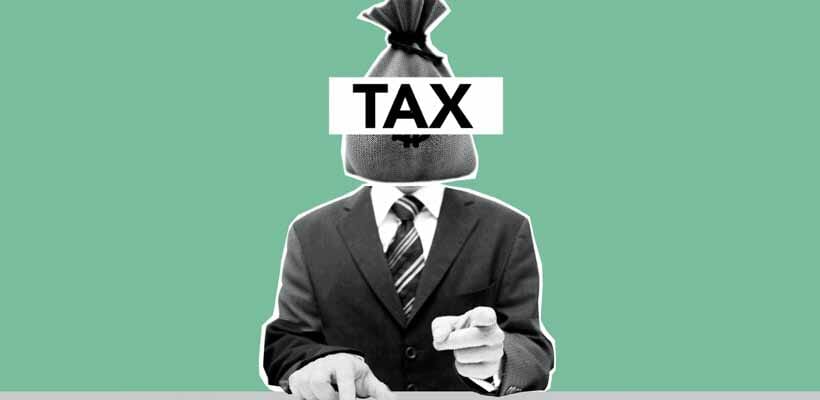
HMRC introduced the new tax to encourage a shift away from single-use plastics and to invest in infrastructure that facilitates increased recycling of plastic materials.
The Extended Producer Responsibility (EPR) legislation also affects businesses using packaging that enters household recycling streams. These packaging producers are responsible for the full cost of recovery and recycling of packaging materials placed on the market. The introduction of modulated fees in 2026 will also result in cost increases for plastics compared to more easily recyclable materials.
In certain areas, businesses may pass the added cost incurred by the new taxes to consumers. However, the competitive nature of the chocolate market means that, as far as Easter egg packaging is concerned, manufacturers are likely to absorb the costs themselves.
Corrugated Easter packaging
Sustainable and eco-friendly Easter packaging materials
Your business can collaborate with GWP to source a wide range of free-standing display units (FSDUs) and point-of-sale (POS) units for use in competitive retail environments.
Other options include “shelf-ready” packaging that your stockists can open and put on the shelf, reducing time spent unpacking and merchandising.
GWP has worked with brands including Bendicks, Tesco, Russel & Atwell (who appeared on the BBC show Dragon’s Den) and several smaller independent food producers.
Why corrugated packaging is environmentally friendly
Despite many common misconceptions, corrugated packaging is one of the most environmentally friendly forms of packaging – if managed correctly.
Most people assume that the World’s forests are being destroyed to make paper. In truth, the material comes from sustainably managed forests, including FSC (Forestry Standards Commission), which would not exist without the materials they provide.

Additionally, paper and cardboard have a recycling rate of 74.3% in the UK, the highest among all packaging materials. Every four months, recycling corrugated cardboard saves an area the size of Greater London from landfills. Recycling cardboard up to 20 times before its fibres become too weak for further use is possible.
Summary
Considering Easter packaging at home or at your business
While selecting your Easter eggs from the supermarket or enjoying some well-deserved chocolate over the bank holiday, please don’t forget the impact of your packaging and how you can recycle it.
Alternatively, if you are a business with packaging requirements this Easter, please contact our team of experts at GWP today.
Share this article
Further reading
About the author

Matt joined GWP in 2012 as Marketing Manager, and is now involved with sustainability and the promotion of Macfarlane’s manufacturing businesses.
Featured products
Get in touch
Related guides
2023 packaging trends – what the experts predict for the coming year
Christmas packaging facts: a definitive list
5 unique ideas to entertain your kids with cardboard
Cheap packaging – is it really cheaper? Points to consider
Plastic Packaging Tax 2022 – a beginner’s guide
Corrugated board grades explained: types of cardboard
Packaging terminology: a glossary of terms and conditions







